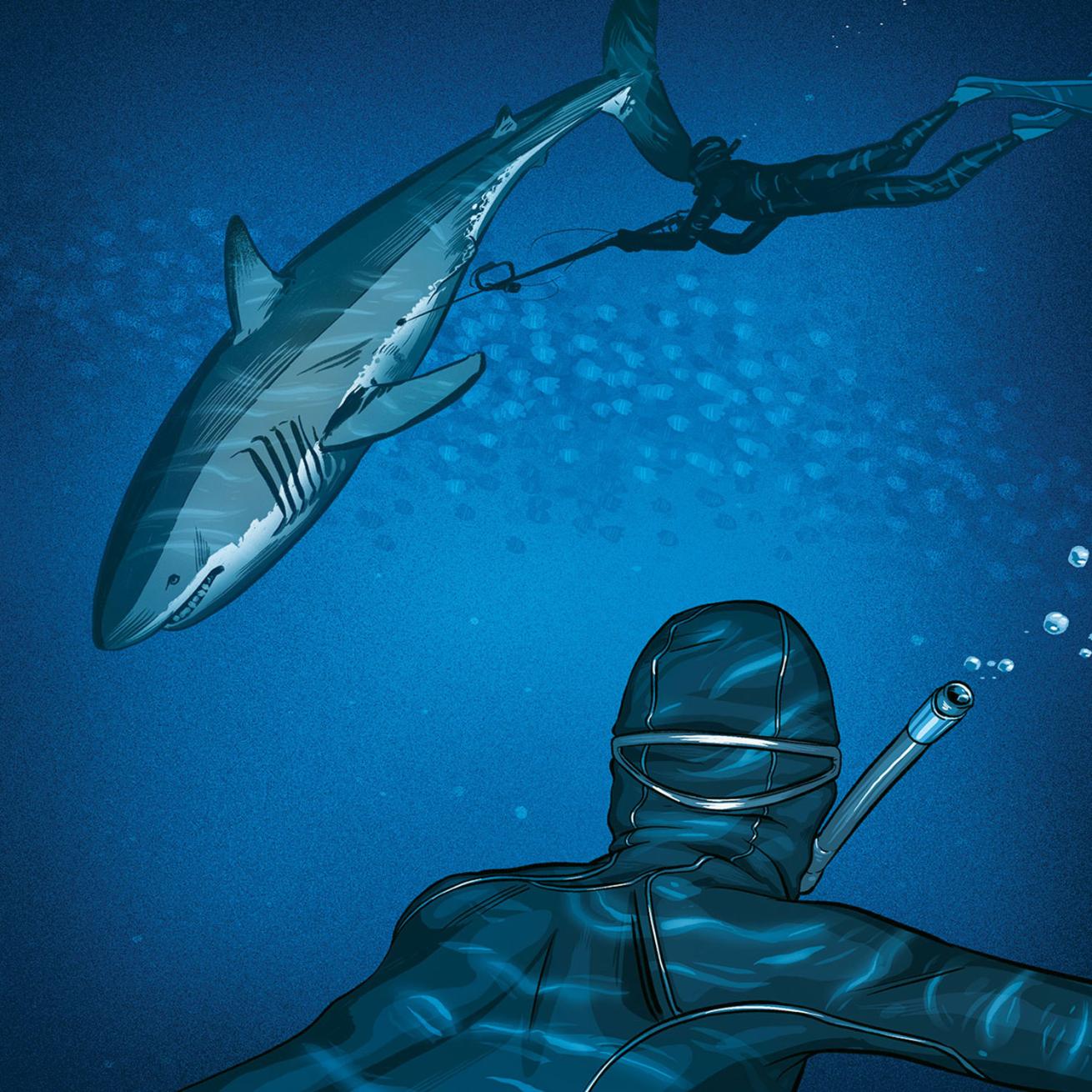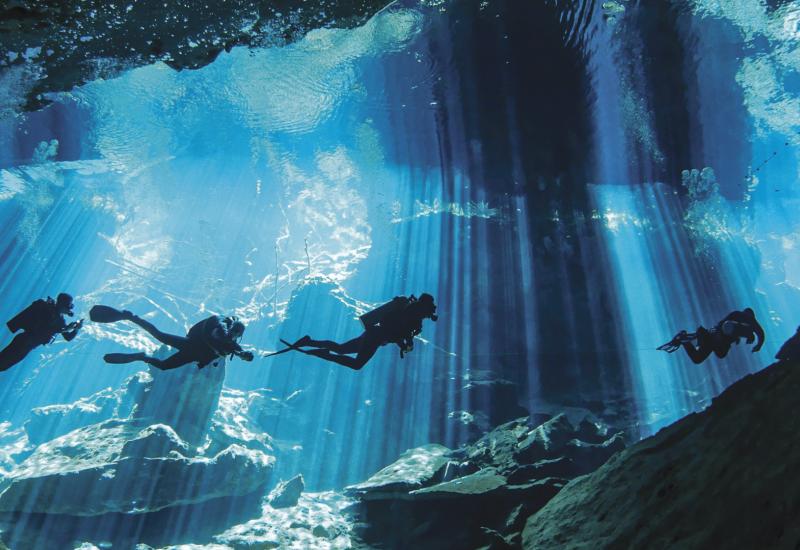What It's Like Free Diving To Tag Great Whites

Steven P. HughesTeam Work
Free divers work together to tag sharks. While one diver focuses on tagging the sharks, the others maintain visual contact with the sharks so that they keep their distance.
To tag a great white, first you must know if it’s a player. By that I mean, will it get close? Many are shy. People believe that if a white shark approaches, it attacks. But luring a shark to the research boat takes work, encouragement. We use bait, which we remove when the free divers enter the water, one at a time and with no splash. Splashes scare sharks.
White sharks are ambush predators. We can free-dive with them only in Isla Guadalupe, Mexico, because the visibility is 100 feet — they can’t sneak up on us like they could in South Africa, where the water is murky.
Our free divers work in teams of three. It takes focus to tag a shark, so while one diver is tasked with tagging the shark, a second acts like a bodyguard, maintaining visual contact with the animal or animals at all times. If they know they are being watched, they’re far less likely to get inquisitive.
The third diver photographs the shark. So far in Isla Guadalupe, 158 individual white sharks have been identified. We want to know whom we tag: Is it one we have seen before in Isla Guadalupe or a new individual? The pattern of pigmentation around the gills, pelvic fins and tail distinguishes each.
The free diver tasked with tagging must swim within roughly 6 feet of the shark; depending on the shark, this dive takes around two to three minutes. The V16 tag — stainless steel and 3.5 inches long — is shot into the base of the dorsal fin on the left side. We tag only the left side to streamline the process. We need to know where to look to see if an animal has been tagged. If you tag the same animal twice, it will emit two frequencies, which collide and cause problems.
As soon as the animal is tagged, the diver surveys his surroundings, and then heads straight back to the boat. Then we wait for a new shark to approach.
Nature is unpredictable, which is why my trips to Isla Guadalupe last three months. Sometimes we’ll tag six sharks in three days, and at other times we’ll wait two weeks before seeing one. To tag two sharks in one day is good; five is amazing.










